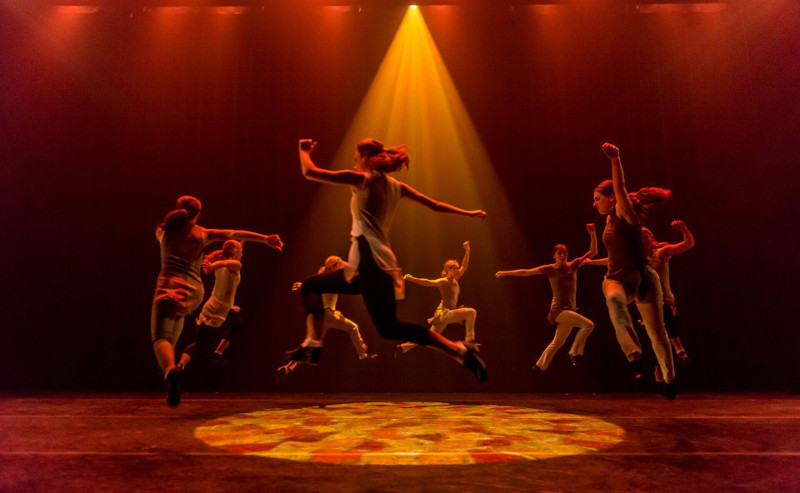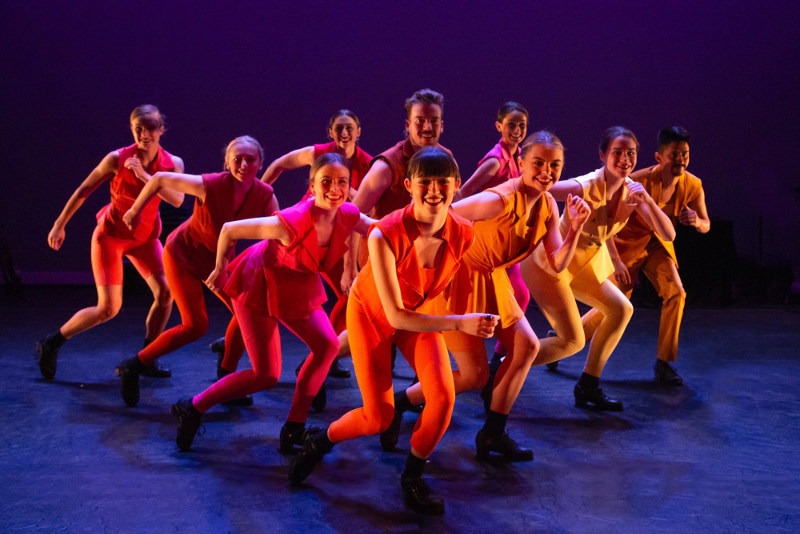
Ed. note: This story by Mindy Aloff, commissioned and previously published by the Younes & Soraya Nazarian Center for the Arts, is reprinted with permission.
During the 1960s and ‘70s, two young Irish step dancers growing up in Chicago proved to be outstanding champions in the rigorous world of dance competitions. Both studied at the renowned school of Margie and Dennis Dennehy. One of those young men, Michael Flatley, went on to dream up the show Riverdance. The other, Mark Howard founded the esteemed Trinity Irish Dance Company (TIDC). A Very Irish Christmas, will bring Howard’s company to The Soraya for the first time, performing a Saturday afternoon matinee on December 9.
Reached by phone at his Michigan blueberry farm, Howard ruminates on the meaning of “progressive Irish dance,” a term he authored. He explains: “The Company has an ability to push through the fourth wall. They reach out, and the audience loves to grab their hand.” He adds, “We connect on the level of taste. We take the Irish dance tradition and the performing arts seriously. This is to elevate the art form. We give a place where dancers can go to experiment with movement.”

A Very Irish Christmas—under two hours with a twenty-minute intermission—will include some familiar elements. “You’ll hear sleigh bells and see some snowflakes, dancers dressed in pjs, elves and fairies,” reassures Howard. “You’ll also see wren boys, representing Day of the Wren, the Irish celebration, held on the twenty-sixth of December, which includes hunting a wren and putting it on top of a decorative pole.” A live, four-man band will prod the dancers to their peak level of exuberance and vitality.
Just three of TIDC’s eighteen dancers are men, including Canadian Patrick Grant, solo world champion last year at World Irish Dance, and Francisco Lemus, from Puebla, Mexico. And world champion dancer Jake James, in his late twenties, will “be doing a virtuosic Christmas romp” with TIDC dancer and artistic associate Ali Doughty. Mr. Howard choreographed that duet, and it distinguishes between what he describes as “the competitive, virtuosic style, with tricks,” and a dance style that is closer to a “Fred-and-Ginger vibe, like those old movies—lighthearted and lovely” (referring to Astaire and Rogers). “Since 1990, we’ve always presented work where women are on an equal footing. They definitely don’t need shirtless male figures crowding them.”
Howard has put into practice a lifetime not just of performance but deep thought about Irish step dance’s unique nature, particularly as compared to other tap-driven forms. “Irish dancing is rooted in the downbeat. There’s not a lot of soul in traditional Irish stepping. Tap is more improvisatory in nature; Flamenco is more staccato. In Irish dancing, it’s all in the flexion you have in your ankle. Rotation [of the ankle] and [the production of] sound: Irish dancers have such heavy lifting to do.”
“My role as a director is to allow a traditional form to breathe with integrity, to lead the way in a genre filled with stereotypical dance productions,” says Mark Howard. “We are on a mission to save Irish dance as something that needs to matter.”
A Very Irish Christmas | Trinity Irish Dance Company | The Soraya | Dec 9
